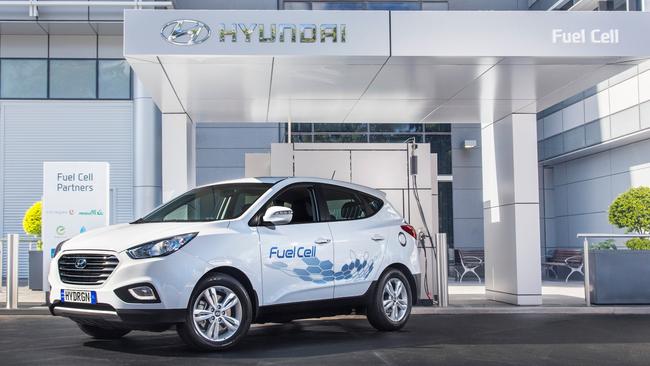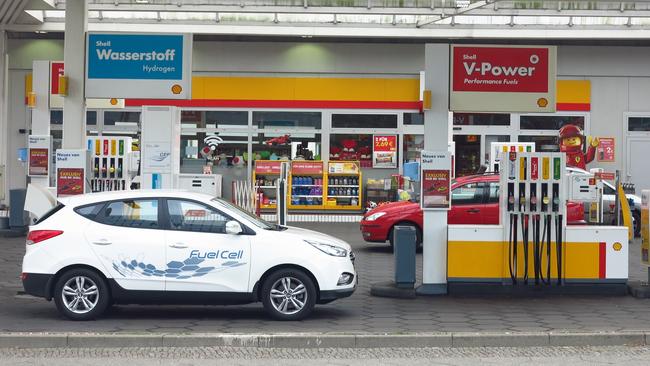Hyundai Nexo hydrogen car coming to Australia this year, petrol-free driving range 800km
Fuel-cell vehicle can be topped up like a petrol car and has a driving range of 800km.
HYDROGEN cars came a step closer to reality on Australian roads this week — but they are years away from showrooms because there is still only one refuelling point in the entire country.
The production version of the Hyundai Nexo, the South Korean company’s second generation hydrogen “fuel cell” car, was unveiled at the Consumer Electronics Show in Las Vegas overnight.
It has a claimed driving range of up to 800km — almost double that of a conventional car — and can be refilled in about five minutes, the same time it takes to top up a petrol tank.
The ACT Government has bought 20 examples of the Nexo as part of a taxpayer-funded $23 million renewable fuels test.
The first batch of cars is due to arrive in late 2018 or early 2019.

Unlike the first Hyundai hydrogen car that arrived in Australia in 2015 — which is left-hand-drive and can only be used on public roads by drivers with special permits — the Nexo SUVs heading to Canberra will be right-hand-drive and road legal for regular licence holders.
While the auto industry has hit the accelerator on development of electric cars, hydrogen vehicles are seen as a better long term solution for Australia given our vast distances.
So far there is only one older model hydrogen-powered Hyundai SUV and five Toyota Mirai fuel cell vehicles in Australia for testing.
To date there is one refuelling point at Hyundai’s Sydney head office, while Toyota has a mobile hydrogen refueller on the back of a truck so it can test in the outback.
There was previously a hydrogen refuelling point in Perth but it was dismantled after a three-year trial with buses ended in 2007.

Advancements in hydrogen cars have given new hope to the alternative energy source.
“Several years ago in hydrogen society they say it’s a chicken-and-egg game: if the infrastructure is ready, or the car is ready. We just blame each other,” says Woong-chul Yang, Hyundai vice chairman, research and development division.
“The car is now ready, we have proved at Hyundai, together with Toyota, a fuel cell vehicle can fully (match) the performance of (conventional) engines. Now we can grow dramatically.”
Mr Yang says the energy companies no longer point the finger at the automotive industry for the slow roll out of hydrogen as an alternative fuel for petrol powered vehicles.
“Even the infrastructure people say no more chicken and egg game,” says Mr Yang. “They say the automotive companies go further ahead on this than the infrastructure and energy companies and governments.”

He said the previous Hyundai fuel cell car proved the theory could work, now it’s time for hydrogen refuel points to be installed.
To date, Germany has about 20 hydrogen refuelling stations available to the public, California has about 50 and Japan has more than 100.
“We guess around after 2030 … the hydrogen (car hardware) cost can be more comfortable than pure electric vehicle, so for that era we are preparing,” says Lee Kisang, senior vice president of Hyundai’s eco-friendly vehicle division.
The executive said the cost of fuel cell cars would be compatible with or less than electric cars because electric cars require a larger battery pack, whereas hydrogen cars use smaller and less expensive battery packs.

Hydrogen cars use a “fuel cell” under the bonnet to create electricity.
The electricity that has been generated in the “fuel cell” in turn powers the on-board battery pack, drives the wheels, or does both.
Some overseas hydrogen refuel points are located adjacent to regular petrol stations.
To refuel, owners simply attach a nozzle to the car in a similar way LPG tanks are refilled.
This reporter is on Twitter: @JoshuaDowling



